Monday, April 14, 2008
EXPLOSION IN SHIRAZ, IRAN MOSQUE
Last weekend news surfaced that a sizeable explosion rocked a mosque in Shiraz, a Central Iran city.
Iran news agencies initially reported a mere EIGHT deaths and a few wounded. They then escalated the situation to an unclear number of dead and wounded.
Next they suggested that explosives stored in the mosques from "a long time ago" had mysteriously exploded, avoiding any explanation of why arms, weapons and ammunition would have been stored in a place of worship.
This prevarication proved too much for AntiMullah and we contacted our own sources in Iran to find out the truth and came up with OVER 50 DEAD and OVER 200 wounded.
And the explosion is privately attributed to the MEK (Mojaheddin-e Khalgh) who had some 30,000 of their followers executed in prisons by Khomeini who gave orders to eradicate them in the 1980s.
Other sources said this was retaliation by Sunni Wahabis in response to a Sunni mosque that was destroyed in Mashhad a couple of years ago.
Truth be told nobody seems to know for sure and built in bias in the sources has shaded their response as to perpetrators but unanimity in casualties. And in the intent to shake up the ruling Mullahs for the event.
Feel free to post informative comments/opinions
Subscribe to:
Post Comments (Atom)

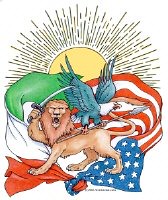
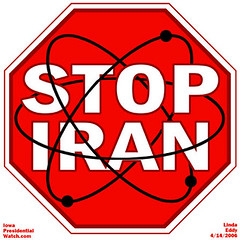

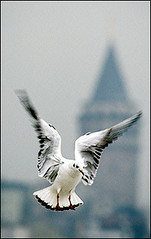



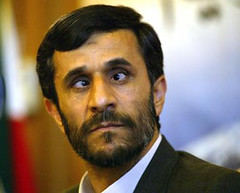



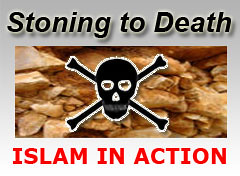

1 comment:
Rubin: Could There Be an Islamic Revolution in Turkey?
Tue, Apr 15, 2008 at 9:54:35 am PST
Michael Rubin on a little-known Turkish Islamist living in the US while pulling strings in Istanbul, and preparing to make a Khomeini-esque grand return to Turkey: Could there be an Islamic Revolution in Turkey?
Few U.S. policymakers have heard of Fethullah Gülen, perhaps Turkey’s most prominent theologian and political thinker. Self-exiled for more than a decade, Gülen lives a reclusive life outside Philadelphia, Pa. Within months, however, he may be as much a household a name in the United States as is Ayatollah Khomeini, a man who was as obscure to most Americans up until his triumphant return to Iran almost 30 years ago.
Many academics and journalists embrace Gülen and applaud his stated vision welding Islam with tolerance and a pro-European outlook. Supporters describe him as progressive. In 2003, the University of Texas honored him as a “peaceful hero,” alongside Martin Luther King Jr., Mahatma Gandhi, and the Dalai Lama. Last October, the British House of Lords and several British diplomats celebrated Gülen at a high-profile London conference. Later this year, Georgetown University scholar John Esposito will host a conference dedicated to the movement. As in 2001, Esposito will cosponsor with the Rumi Forum, an organization Gülen serves as honorary president.
The Gülen movement controls charities, real estate, companies, and more than a thousand schools internationally. According to some estimates, the Gülen Movement controls several billion dollars. The movement claims its own universities, unions, lobbies, student groups, radio and television stations, and the Zaman newspaper. Turkish officials concede that Gülen’s followers in Turkey number more than a million; Gülen’s backers claim that number is just the tip of the iceberg. Today, Gülen members dominate the Turkish police and divisions within the interior ministry. Under the stewardship of Prime Minister Recep Tayyip Erdoğan, one of Gülen’s most prominent sympathizers, tens of thousands of other Gülen supporters have entered the Turkish bureaucracy. ...
His slate wiped clean, Gülen has indicated he may soon return to Turkey.
If he does, Istanbul 2008 may very well look like Tehran 1979. Just as Gülen’s supporters affirm his altruistic intentions and see no inconsistency between a secretive, cell-based movement and transparent governance, too many Western journalists also give Gülen a free pass.
If this sounds familiar, it should: Three decades ago, the same phenomenon marked coverage of Iran. “I don’t want to be the leader of the Islamic Republic; I don’t want to have the government or power in my hands,” Khomeini told a credulous Austrian television reporter during the ayatollah’s brief sojourn in Paris. In November 1978, Steven Erlanger, the future New York Times foreign correspondent, penned a New Republic essay arguing that Khomeini’s vision for Iran was essentially a “Platonic Republic with a grand ayatollah as a philosopher-king,” and predicting the triumph of an independent liberal left worried more about labor conditions in Iran’s oil fields than pursuing any theological tendency.
In Tehran then as in Ankara now, U.S. ambassadors preferred garden parties with the political elite and maintained contacts with only a narrow segment of the population. They were blind. As the State Department and Central Intelligence Agency remained clueless or belittled concerns about Khomeini’s intentions, millions of Iranians turned out to greet their Imam at Tehran’s international airport. Turks now say that similar crowds might greet Gülen when his plane touches down in Istanbul.
Post a Comment